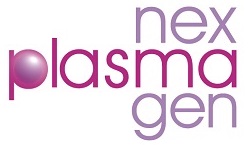Our peer-reviewed scientific papers with the CPJ technology and previous versions of it:
-Jean-Sébastien Boisvert, Julie Lafontaine, Audrey Glory, Sylvain Coulombe, and Philip Wong (2020) “Comparison of Three Radio-Frequency Discharge Modes on the Treatment of Breast Cancer Cells in Vitro”, IEEE Transactions on radiation and plasma medical sciences, Vol.4, No.5. (link to article)
– Julie Lafontaine, Jean-Sébastien Boisvert, Audrey Glory, Sylvain Coulombe, and Philip Wong (2020), “Synergy between Non-Thermal Plasma with Radiation Therapy and Olaparib in a Panel of Breast Cancer Cell Lines”, Cancers, 12, 348; doi:10.3390/cancers12020348. (link to article)
-Leduc M., Guay D., Leask R.L., Coulombe S. (2010). “Effect of Non-Thermal Plasmas on DNA and Mammalian Cells”, Plasma Proc. Poly., 7, 899-909. (link to article)
-Leduc M., Guay D., Leask R.L., Coulombe S. (2009). “Cell Permeabilization Using a Non-Thermal Plasma”, New J. of Phys., 11, 1-12. (link to article)
-Leduc M., Coulombe S. and Leask R.L. (2009). “Atmospheric Pressure Plasma Jet Deposition of Patterned Polymer Film for Cell Culture,” IEEE Trans. Plasma Sci. (Special Issue on Atmospheric-Pressure Plasmas: Science and Applications) 37, 927-933. (link to article)
-Léveillé V. and Coulombe S. (2006). “Electrical Probe Calibration and Power Calculation for a Miniature 13.56 MHz Plasma Source”, Meas. Sci. Technol. 17, 3027-3032. (link to article)
-Léveillé V. and Coulombe S. (2006). “Atomic Oxygen Production and Exploration of Reaction Mechanisms in a He-O2 Atmospheric Pressure Glow Discharge Torch”, Plasma Proc. Poly. 3(8), 587- 596.(link to article)
-Yonson S., Coulombe S., Léveillé V. and Leask R. L. (2006). “Cell Treatment and Surface Functionalization Using a Miniature Atmospheric Pressure Glow Discharge Plasma Torch,” J. Phys. D: Appl. Phys. 39, 3508-3513. (link to article)
-Coulombe S., Léveillé V., Yonson S. and Leask R. (2006). “Miniature Atmospheric Pressure Glow Discharge Torch (APGD-t) for Local Biomedical Applications,” Pure & Applied Chemistry, 78(6), 1137-1146. (link to article)
-Léveillé V. and Coulombe S., (2005). “Design and Preliminary Characterization of a Miniature Pulsed RF APGD Torch with Downstream Injection of the Source of Reactive Species”, Plasma Sources Science and Technology, 14, 467-476.(link to article)





